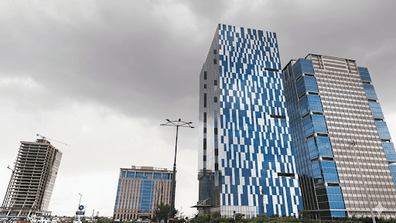🔁 Special Non-Resident Rupee (SNRR) Accounts: FEMA FAQs for Trade & Investment (2025 Guide)
- GIFT CFO
- Jul 18
- 3 min read
Updated: Jul 24
🌍 Introduction: Why Are SNRR Accounts Important?
Special Non-Resident Rupee (SNRR) Accounts allow non-residents to carry out eligible INR transactions in India without converting to/from foreign currency for every deal.
They're essential for:
Trade settlements (exports/imports)
Foreign direct investment (FDI)
External commercial borrowings (ECBs)
Rupee-denominated loans or credits
This Q&A blog simplifies the 2025 FEMA regulations and RBI guidance to help you understand the procedures, responsibilities, and reporting rules around SNRR accounts.

🧾 Q1. What are SNRR accounts used for?
SNRR accounts are used by non-residents for INR transactions such as:
Import/export payments
Investments into India
ECB drawdowns and repayments
Trade credits
They replace the need for foreign currency conversion in each case, easing operational complexity.
⚙️ Q2. How should SNRR transactions be handled by AD banks?
For Debits (payments made):
When funds are paid from an SNRR account to a resident:
Mention purpose code
Mention country of origin (if applicable)
Tag it as an SNRR transaction
For Credits (funds received):
When funds are sent to the SNRR account from within India:
AD bank must confirm it as an SNRR transaction
Follow FEMA-compliant documentation and reporting
📌 AD banks must identify the counterparty and flag transactions correctly for both compliance and regulatory monitoring.
👤 Q3. Who is responsible for FEMA compliance?
It depends on the transaction:
A. For Exports (Debit to SNRR):
Exporter’s AD bank ensures FEMA export compliance
SNRR holder’s bank must:
Do full KYC
Share all transaction details with exporter’s bank
Help close the entry in EDPMS
B. For Imports (Credit to SNRR):
Importer’s AD bank ensures FEMA import compliance
Must inform SNRR account bank with complete importer details
C. For ECBs, FDI, and Trade Credits:
Resident’s AD bank handles:
FEMA compliance
FIRC issuance
KYC/document sharing (as with any FX remittance)
📄 Q4. Is A2 form reporting required for INR payments into SNRR accounts?
✅ Yes. If the underlying transaction (like imports or outward remittance) needs Form A2, then A2 reporting is still required, even if the INR payment is made to an SNRR account domestically.
📊 Q5. Who handles FETERS reporting for SNRR accounts?
The AD bank maintaining the SNRR account is responsible for:
Purpose codes
FETERS (R-return) compilation
Based on transaction type:
Cross-border transfers: Reported as AD bank transfers
Domestic INR transactions: Reported per underlying nature (e.g., ECB, FDI, exports, imports)
📌 Refer to RBI Circular A.P. (DIR Series) No. 25 dated March 20, 2019 for detailed rules.
🌏 Q6. Can SNRR accounts be used for ACU (Asian Clearing Union) trade?
❌ No. SNRR accounts cannot be used for ACU settlements.
ACU trade must follow:
Regulation 3(1)(A) and 5(1)(A) of FEMA Notification 14(R)
ACU mechanism is separate and outside the SNRR system
💵 Q7. Can interest be earned on SNRR balances or term deposits?
❌ No interest is permitted. SNRR account balances or any linked term deposits cannot earn interest. These accounts are for transactional purposes only.
🚫 Note: Who is excluded from this FAQ?
These FAQs do not apply to SNRR accounts held by:
Foreign Portfolio Investors (FPIs)
Foreign Venture Capital Investors (FVCIs)
Depository Receipt/FCCB conversion accounts
👉 These are handled separately by custodian banks under Para 7.1(i), Part II of the RBI Master Directions on Deposits.
📌 Conclusion: Use SNRR Accounts Strategically, But Compliantly
SNRR accounts are a vital tool for seamless INR-based cross-border transactions, especially in sectors like infrastructure, trade, and investment. However, their use must align with FEMA rules, RBI directives, and proper reporting frameworks like A2 and FETERS.
📩 Need assistance with SNRR account compliance, FEMA reporting, or ECB structuring?Reach out to GIFT CFO — your trusted partner in cross-border compliance and IFSC banking advisory.


























































































Comments